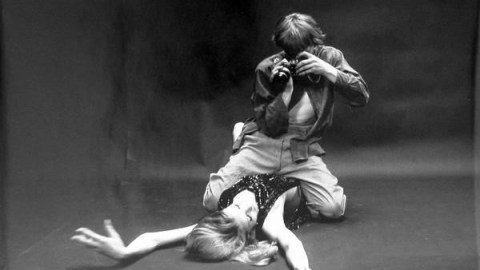A Renaissance Education, Now Available in Your Netflix Queue

If every student in the world had to take one required course, I would argue that course should be on classic Italian cinema. By that I mean the cinema of Roberto Rossellini, Luchino Visconti, Pier Paolo Pasolini, Bernardo Bertolucci, Michelangelo Antonioni, Federico Fellini, Sergio Leone and many other auteurs who reinvented cinema in the period after the fall of Mussolini.
This is the glamorous cinema of Marcello Mastroianni, Anita Ekberg and Monica Vitti. It is also a cinema of ideas, in which the filmmakers wrestled with the great themes of modernity, from the gritty neorealism of Open City and Accattone!to the hypnotic, existential ‘dead time’ of L’Avventurato the ‘Catholic irrationalism’ of La Dolce Vita to the postmodern apotheosis that is Blow Upto the (one more if I may!) theater of cruelty that is Salo, or the 120 Days of Sodom(a film that is not for the faint of heart).
Put these films in your Netflix queue and you will not only get a first-class education on the history of cinema, you will also get a window into the rich visual culture of the Renaissance that these Italian auteurs borrowed from so heavily.
What’s the Big idea?
A recent book by the art historian Andrew Graham-Dixon that was recently profiled on Big Think shows how Michelangelo Merisi da Caravaggio created “a kind of visual imprint that would have such a lasting effect not just on art history, but visual history — film.” That is how Graham-Dixon’s book was reviewed by Joseph Luzzi, Director of Italian Studies at Bard College who also recently appeared on Big Think (small world, isn’t it?).
As a film historian, Luzzi sees Caravaggio’s influence — from his innovative “cinematic” use of light to the composition of his subjects — everywhere in the works of Pier Paolo Pasolini, the controversial Italian director who happened to study Caravaggio at theUniversity of Bologna. And yet, Luzzi tells us Caravaggio’s influence is ubiquitous:
I think it’s one of those things that Caravaggio becomes refracted through so many different artists, so you don’t have to say he’s necessarily influencing someone in an A to B relationship, but it kind of becomes part of the visual archive, if you will, of Italian culture.
What’s the Significance?
As Luzzi points out, Caravaggio’s visual signature has been transmitted throughout world culture. When wealthy travelers used to do the ‘grand tour’ of Europe, Italy came to be known as ‘the University of the world.’ And just as the birth of Goethe’s aesthetic was steeped in his encounter with Rome, Luzzi says Caravaggio’s fingerprint can be found in contemporary American culture, for instance, in the films of Martin Scorcese. Indeed, a Renaissance education was transmitted to the American director through Italian filmmakers such as Fellini, Antonioni, Visconti, Rossellini and others.
In the video below, Luzzi describes how Scorsese’s documentary My Voyage to Italyis like the experience of spending a junior year abroad in college, or, if you prefer, it’s like going to film school.
Watch the video here:
Image courtesy of Shutterstock
Follow Daniel Honan on Twitter @Daniel Honan





